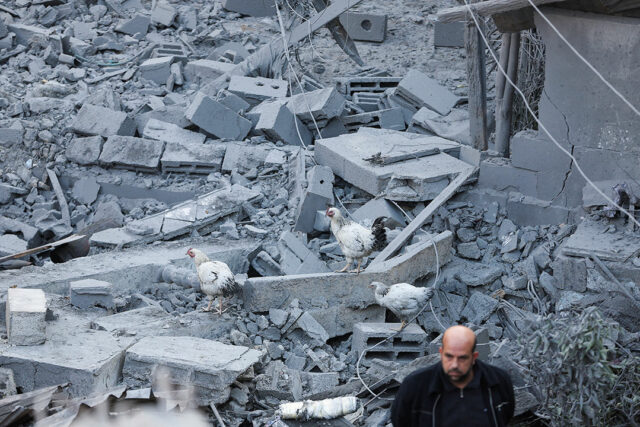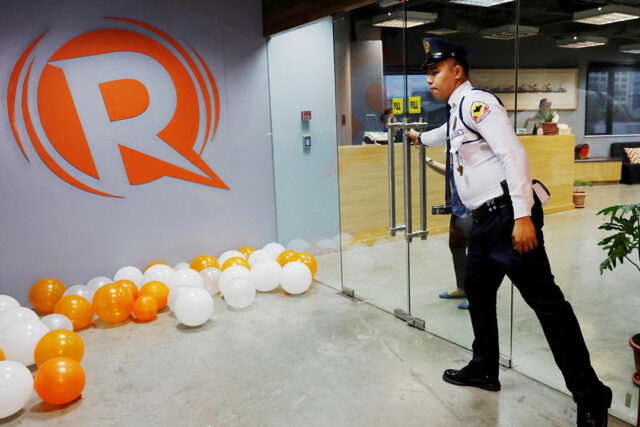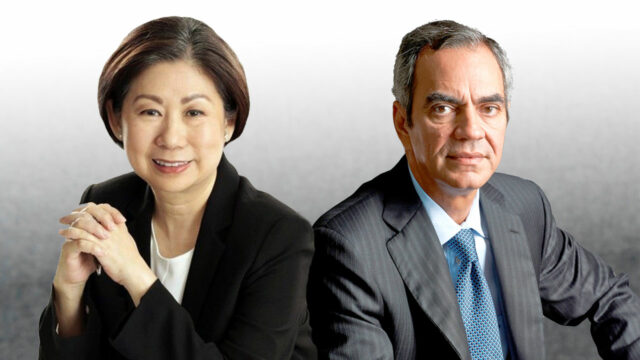In Gaza, keeping the internet on can cost lives but also save them

BEIRUT (Thomson Reuters Foundation) – Forced to flee his home yet again as war raged across the Gaza Strip, Khalil Salim was desperate to get his family to safety but how could he be sure he wasn’t leading them deeper into danger?
He needed up-to-date information and so he went online and checked out the official social media accounts of the Israeli army and other online sources.
“We would take instructions from the internet. We couldn’t assess the internal fighting … so we would follow the news and channels and look at Facebook and see what people wrote,” Mr. Salim said.
But when he could not get a signal or a connection, he was left in the dark, with no sure way of plotting a safe route.
“What was pitiful is that (the Israeli army) would put instructions on their Facebook and we wouldn’t even have internet. It would be very difficult for us to find out that there were instructions to do this and not that. Sometimes we would spend two days, sometimes a week, without internet.”
In the rubble of Gaza, it can be difficult and dangerous to get online but tech activists and Palestinian engineers are making sure the enclave does not go totally dark, securing a precious digital lifeline for thousands of people.
Preserving this connection comes at a price and the risks can be deadly for desperate users clambering to high ground to get a signal or engineers traveling to dangerous areas to repair damaged cables or telecoms towers.
In May, an Israeli strike hit a gathering of people outside a Gaza City shop that provides an internet signal for customers, killing at least three people and wounding more than 20, medics said.
Mr. Salim knows all too well what drove those people to that shop.
“Internet is life; without the internet, (life) has no meaning, it is like a prison,” the IT engineer and pharmacist told the Thomson Reuters Foundation by phone from Al-Mawasi, an area on the western outskirts of Khan Younis where he now lives with his family after fleeing the border city of Rafah.
THE GIFT OF ACCESS
Israel launched its offensive on Gaza after fighters from the Hamas Islamist militant group attacked southern Israel on Oct. 7, killing 1,200 people and capturing 253 hostages, according to Israeli tallies.
Israel responded by assaulting the coastal enclave, vowing to annihilate the group. Almost 40,000 people have since been killed in Israeli strikes, according to Gaza’s health authorities, with thousands more bodies feared buried under the rubble.
Gaza’s economy and infrastructure have been devastated by months of relentless bombing and conflict. Houses, roads, schools, and hospitals have been obliterated and around 70% of the infrastructure needed for communication and technology has been damaged or destroyed.
Tech entrepreneurs outside Gaza are using electronic SIMs, or eSIMs, to help strengthen Gaza’s frayed digital lifeline.
An eSIM gives users the option of activating a mobile network’s cellular data plan without actually having a physical SIM card. They can be activated using a QR code, allowing users to connect in roaming mode to a foreign network.
For example, Gaza Online, a volunteer group, provides free eSIMs to families to help them stay connected to each other. The group relies on in-kind donations of eSIM activation codes and matches them with families in Gaza through WhatsApp.
Early in the war, an eSIM allowed Salim to oversee the evacuation of his daughter, who was wounded in an Israeli bombing in October, to Egypt and then Tunisia. He was also able to advise doctors on her care.
Nadine Hassan, Gaza Online’s chief operating officer who is based in Jordan, said her group’s work is becoming “more challenging every day” with funding a particular issue.
The group has been finding it increasingly difficult to buy eSIMs online as vendors keep closing down their accounts, saying they violated terms of service by buying in bulk.
Activating an eSIM requires a relatively new smartphone model and updated software, Hassan said, a tall order for people in Gaza who are preoccupied with securing access to food and clean water.
Another hurdle, and something of a mystery, is the fact that most of the eSIMs only seem to work at night.
“We have no idea why and we can’t find an explanation for it,” she said.
ENGINEERS RISK LIVES
Even before the war, telecoms services in Gaza were fragile; a World Bank report from earlier this year said the enclave was the only place in the world that still relied on “obsolete” 2G technology and had no mobile broadband coverage.
By February, the enclave’s largest telecoms provider, Paltel, had reported more than 10 total collapses in service provision since Oct. 7. Even when its network has been partly working, it has struggled to maintain service in many areas because of the fighting.
Despite the ongoing battles between Israeli forces and Hamas militants, telecoms engineers have been working to restore services, with reports of several being killed while trying to fix damaged infrastructure.
Speaking to the Thomson Reuters Foundation in March, Hani Alami, who heads East Jerusalem-based internet service provider Coolnet, said one of his teams working in the centre of Gaza was hit in February during a suspected Israeli attack, with two engineers killed and one injured.
Mr. Alami said he had coordinated his team’s movements with the Israeli army before they headed out.
“They gave us the green light to move from the first point and while the vehicle was moving on its track, they bombed the vehicle,” he said.
Asked about the alleged incident, the Israeli army said in a statement to the Thomson Reuters Foundation that it “follows international law and takes feasible precautions to mitigate civilian harm.”
Some activists have called on Israel to observe a digital ceasefire as the war drags on.
In an article for the Thomson Reuters Foundation, Brett Solomon, former executive director of Internet advocacy watchdog Access Now, said “digital ceasefires must be annexed to traditional ceasefire agreements, encompassing everything from connectivity to censorship.”
For now, as he tries to rebuild his life in a half-built house close to the sea, Mr. Salim feels more isolated than ever. He can no longer use his eSIM as he is too far from Israeli telecoms towers, he said.
Instead, he must make do with local providers who charge exorbitant fees to go online. It can also take up to a month to get the necessary approvals to get an Internet connection.
That’s just too long for people who might have to flee the bombs and bullets again as the conflict waxes and wanes.
Mr. Salim would like to get his IT business up and running again so that he can provide for his family. But with no internet, there can be no work.
“If they see you cannot even do a meeting, they become convinced that you cannot do the job.” – Reuters














